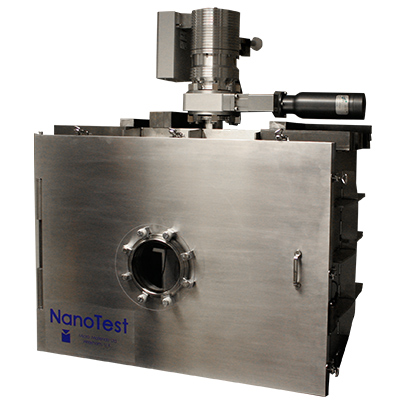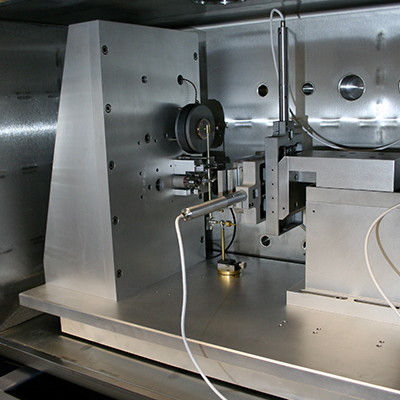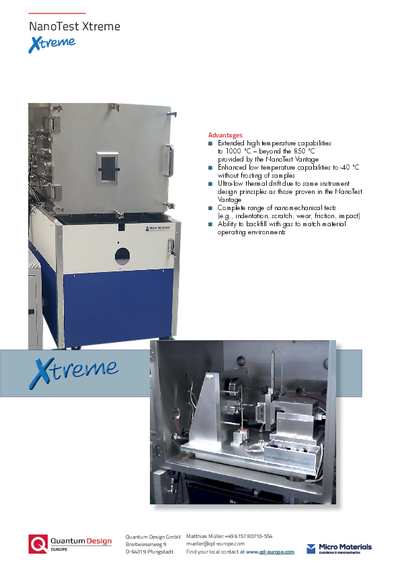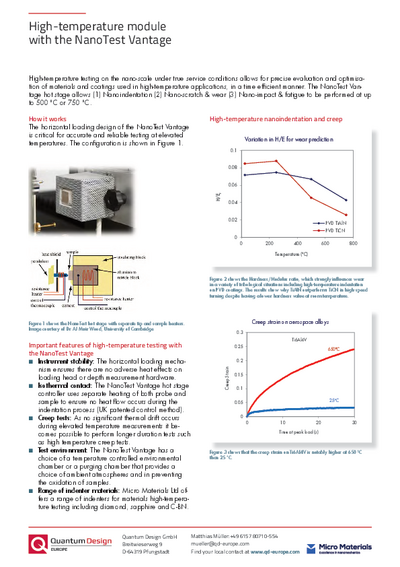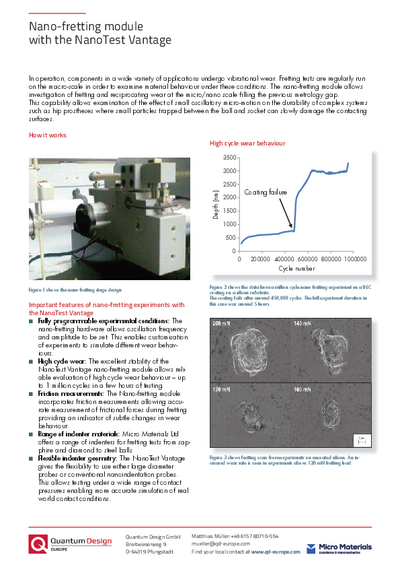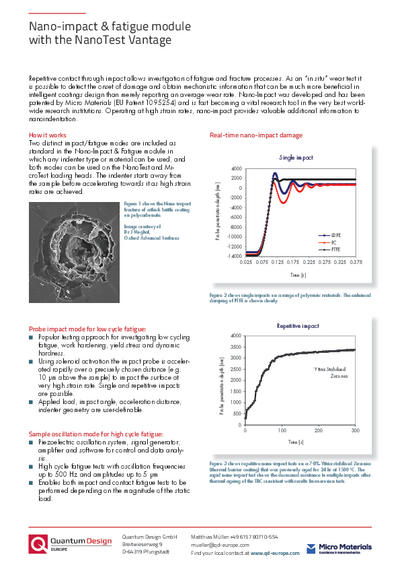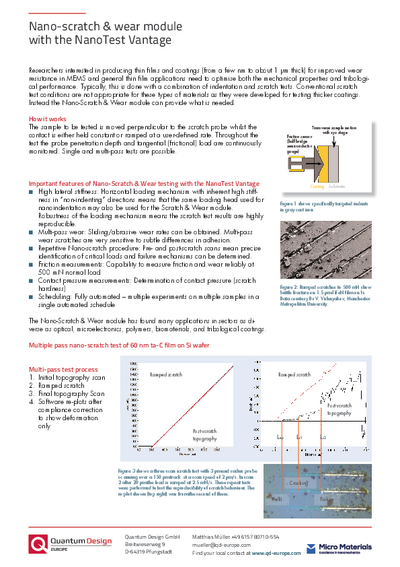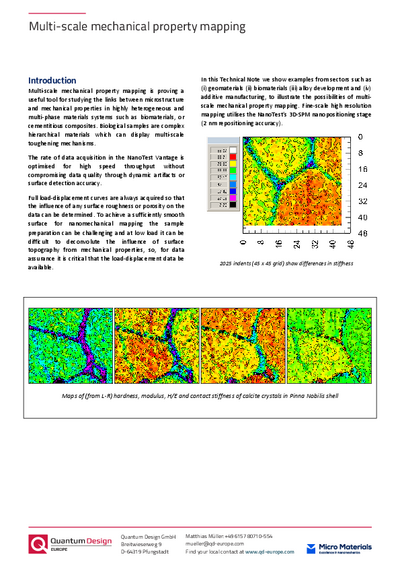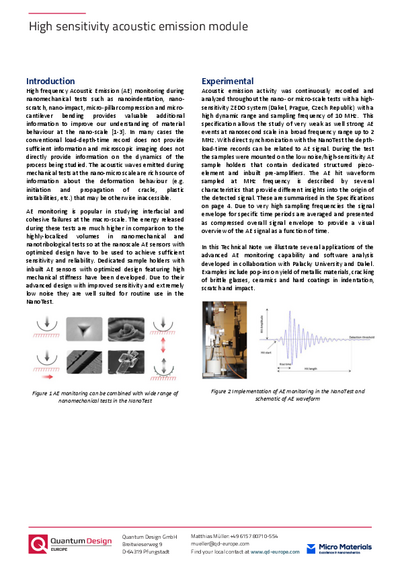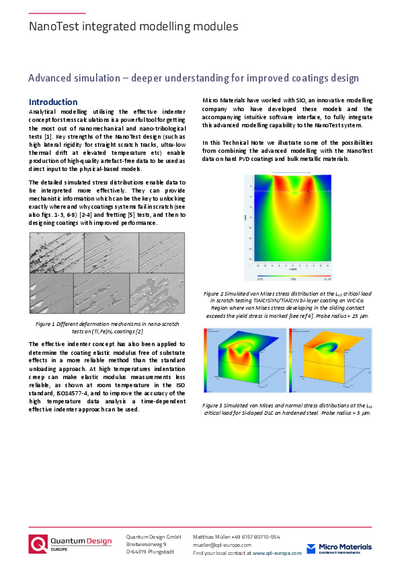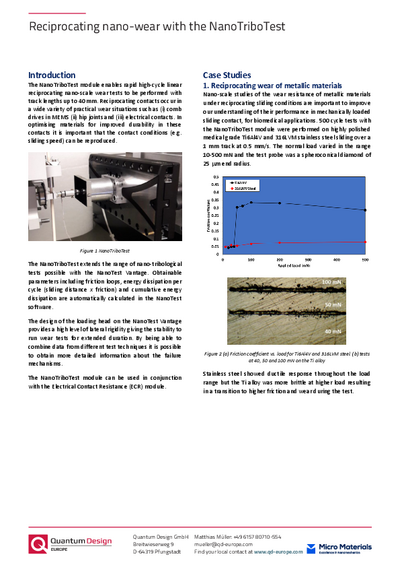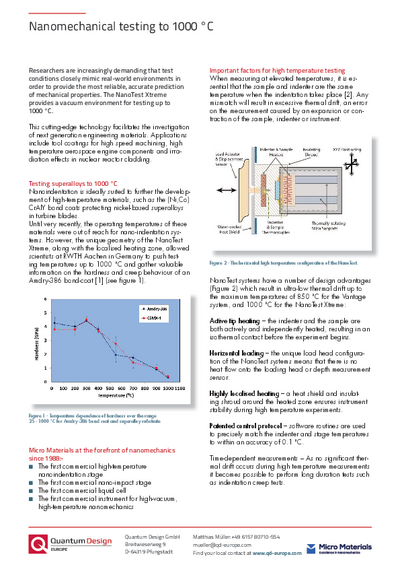Vacuum nanoindenter
NanoTest Xtreme from Micro MaterialsThe nanoindenter NanoText Xtreme is the first commercially available vacuum-nanoindenter with a unique temperature range, intended to measure at the forefront of high temperature nanoindentation for very demanding applications, when suppression of oxidation of sample and indenter material are crucial.
- Wide accessible loading range from 10 µN up to 500 mN
- Various testing techniques besides standard nanoindentation to simulate variety of contact mechanics
- Unrivaled temperature range from -40 °C up to 1000 °C
- Variation of environmental conditions to simulate true service conditions
- Vacuum ready solution for very high temperature applications
Further information
The NanoTest Xtreme ist the result of almost a decade of research and collaboration with existing users and constant product development.
This unique system is currently the only commercially available vacuum nanoindenter in the temperature range from -40 °C up to 1000 °C and higher. Similiar to the NanoTest Vantage, the system is a universal platform for different methods to characterize the mechanical properties of surfaces and thin films, as well as testing the microstructural material properties. The modularity of the system allows both the combination of all the measurement modules and customizing the system to specific applications.
The base frame made of aluminium together with new, high-resolution electronics, provides even more precise measurements with highest load and displacement resolutions at lowest drift rates. The system comes with all required vacuum accessories (vacuum chamber, turbo pump, feedthrougs, etcs.) and is turn-key ready installed into the vacuum chamber.
The special pendulum design provides full modularity and excellent performance, both fully ISO 14577 and ASTM 2546 compliant. The nanoindenter NanoTest has the lowest drift rate of all instruments in the market, both at room and elevated temperature. This allows the application of a wide range of loading rates during the measurements. Besides the well known nanoindentation-technique, also other tests such as scratch and wear tests as well as nano-impact and fatigue for high strain rate testing are available options and expand the accessible experiment window to simulate the contact mechanics in the final application.
Specifications
Loading range:
300 mN – 30 N Micro-Loadinghead
Measurement Options:
- Nanoindentation / Nanohardness testing
- Microindentation / Microhardness testing
- Nano- Scratch tests with simultaneous friction measurement
- Nano-Impact measurements
- Nano-Fretting
Environmental Options:
- High Temperature to 1000 °C
- Cold Temperature to -40 °C
- Vacuumlevel of 10-5 mBar
- Possibility of backfilling with inert and reaction gas
- Temperature options include independent tip and sample heating to ensure isothermal contact
- Most of the measurement options are compatible with the environmental options
Imaging Options:
- High temperature optics
- SPM – Imaging (compatible with Temperature options)
Applications
- Obtaining hardness & modulus with Nanoindentation according to ISO standards by using the Oliver-Pharr method
- 3D mapping of mechanical properties to display various phases/sample homogeneity
- Load-Partial-Unload Nanoindentation for depth profiling of hardness and modulus
Main motivation for the development of this novella vacuum-nanoindenter NanoTest Xtreme was the access to even higher temperatures.
For many materials, especially with regards to high temperature nanohardness testing, an inert gas atmosphere is simply not enough to surpress oxidation rates sufficiently. Hence it was obvious, to try integrating the nanohardness tester NanoTest into a vacuum chamber.
The current temperature range covers -40 °C up to 1000 °C and beyond and allows material testing in a completely unique temperature range for todays nanohardness testers. In addition, the upper boundary will be pushed towards 1000 °C and further within the near future.
The pantented control method, as well as the necessary separate Indentertip and sample heating continue to feature the high temperature option.
Some typical applications for high temperature nanohardness testing are:
- Optimization of wear for cutting tool coatings
- Investigation of materials for nuclear applications: e.g. plasma-wall-interaction
- Determination of mechanical properties of thermal barrier coatings
- Characterization of materials and metals at high temperatures
Downloads
Videos
Contact


